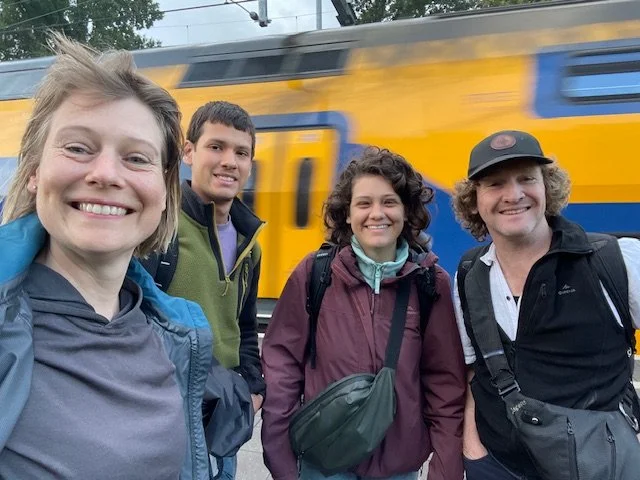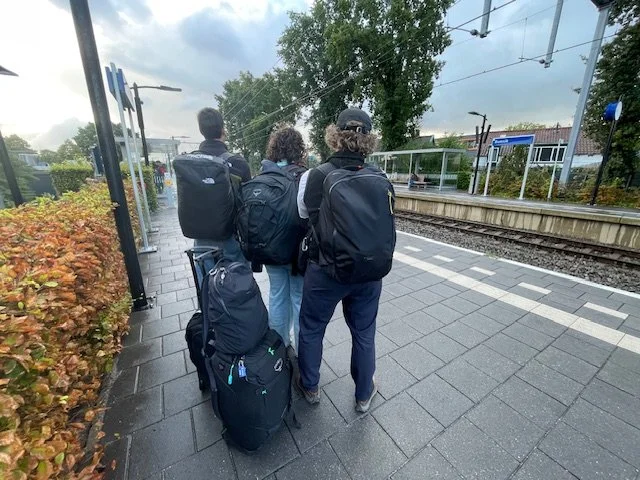Lightning fast on the trains through Europe
You might be wondering: How are we getting around in Europe? Well, we opted to use the very fast European trains that can travel at 300kh. This blog will give you an overview of what is to come and what our train itinerary looked like. We travelled for around a month through Europe and added a detour to Morrocco.
From mid-September to mid-October, we visited a total of 8 countries which included: the Netherlands, Germany, Czechia, Austria, Italy, Vatican City, France and Morrocco. Although we did pass through Belgium, I don’t think we can count that since we didn’t leave the train station, we did however see the scenery.
On the train, we got to travel first class on the trains in Europe. The reason we bought the first-class tickets was because it was only a few dollars extra for a lot better seats. The train trip was very nice, I think that train travel is now one of my favourite ways to travel since it is fast, you can move great distances and it’s not so bumpy. I don’t think I would like it as much in Australia as most of the trains are bumpy and go very slowly.
In the following section I’ll answer a few questions about the European train network I have been thinking about.
Why the European train network? Why did we (SQAD) not just fly from place to place?
These are interesting questions, first of all the Europe trains are way more affordable that flying x 4 people. We also get to see a lot of the scenary that the European countryside has to offer and going by train allowed us to explore a new way of traveling through countries very different from how we got around in South America. Lastly, the European content has one of the and extensive train networks in the world.
How long has the European train network been operating?
It been operating for approximately 190 years although in the 16th–18th century there were tracked transport, such as horse-drawn wagonways for things like mines. In 1835, the Bavarian Ludwig Railway became the first steam-powered public railway in continental Europe, launching services between Nuremberg and Fürth in Germany.
The 19th–20th century Europe saw a swift expansion of its railway network, linking major cities. Now Europe’s rail system is deeply interconnected, featuring advanced high-speed lines as well as seamless border crossings, enabled by unified standards like the European Train Control System (ETCS).
What was our route?
We visited:
Germany
· Cologne
· Berlin
Czechia
· Prague
Austria
· Innsbruck
Italy
· Bologna
· Roma
· La Spezia
· Torino
France
· Paris
Morrocco
· Casablanca
· Tangier
· Chefchaouen
Staying light and nimble on this leg of the journey
You may be wondering HOW did we travel on trains and plane when we have to be light and nimble. Normally we travel with two big 70L Patagonia bags and 4 carry-on bags. My mum and David have an Osprey Sojourn Wheeled Travel Pack 45L, my brother has a north face Base Camp Voyager Duffel - 42L and I have a Fairview™ Travel Pack 40L. Ironically the longer we are away the easier it is to travel we less. We left the two big Patagonia bags, our laptops and some things in our own bags that was taking up too much space and weight at Opi and Nanas house . I think all of us were around 7kg.
Still doing schoolwork
To keep connected, we just used my mum’s laptop when we needed to do schoolwork because all our stuff is in the cloud including my website. Light and nimble worked pretty well for us. Even though we had only 1 computer I was able to keep some blogs coming out for you guys while I was going 300kh on a train through Europe and my brother kept on progressing with his online schooling in the hours on the train.
In the next blog I’ll dive into our first stop of the European train adventure, stay tuned for our exciting experiences in Germany.



